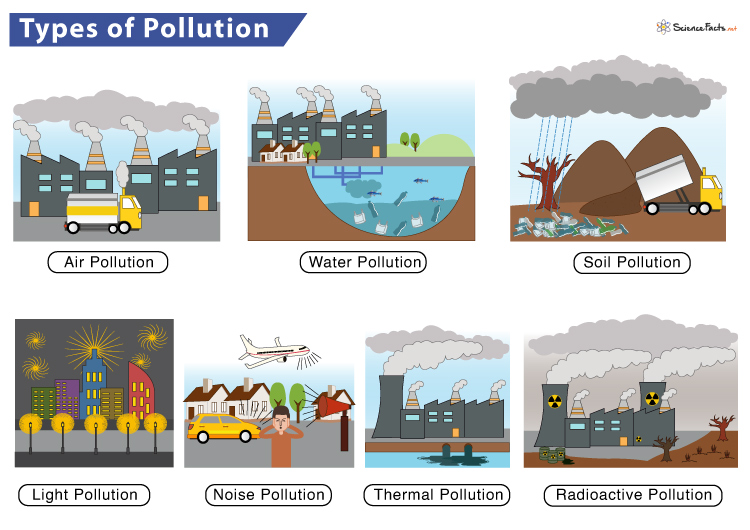Which Type of Pollution Includes CFCs and Smog?

Introduction
Pollution is a pressing global concern that poses significant threats to the environment and human health. Among various pollutants, Chlorofluorocarbons (CFCs) and smog are particularly damaging. This article aims to delve into the topic of pollution associated with CFCs and smog to better understand its impact and possible solutions. By exploring the causes, effects, and mitigation measures, we can take steps towards a cleaner and safer planet.
What are CFCs and Smog?
CFCs, also known as chlorofluorocarbons, are synthetic compounds primarily used in refrigeration, air conditioning, and aerosol propellants. They were widely used until their harmful impact on the ozone layer was discovered. Smog, on the other hand, is a visible haze resulting from the reaction of pollutants, such as nitrogen oxides and volatile organic compounds, in the atmosphere.
The Origins of CFCs and Smog
CFCs were first synthesized in the early 1930s, and their use expanded rapidly due to their versatility and stability. However, it wasn’t until the 1970s that scientists began to notice the damaging effect of CFCs on the ozone layer. Smog, as an air pollutant, has been a problem since the industrial revolution when the burning of fossil fuels became widespread.
The Link Between CFCs and Ozone Depletion
The ozone layer in the Earth’s stratosphere plays a crucial role in protecting life from harmful ultraviolet (UV) radiation. When CFCs are released into the atmosphere, they eventually reach the stratosphere, where the intense UV radiation breaks them down, releasing chlorine atoms. These chlorine atoms then catalytic ally destroy ozone molecules, leading to the depletion of the ozone layer.
Smog and its Impact on Air Quality
Smog is a complex mixture of various pollutants, including nitrogen oxides, sulfur dioxide, particulate matter, and volatile organic compounds. When these pollutants react with sunlight, they form ground-level ozone, which is a major component of smog. Prolonged exposure to smog can lead to respiratory issues, cardiovascular problems, and other health complications.
The Environmental and Health Effects of CFCs and Smog
The consequences of CFCs and smog on both the environment and human health are significant. Ozone depletion due to CFCs has led to increased UV radiation reaching the Earth’s surface, contributing to skin cancer and other health issues in humans, as well as harmful effects on wildlife and marine ecosystems. Smog, on the other hand, has been linked to respiratory diseases, decreased lung function, and even premature death.
Regulations and Phasing Out of CFCs
To address the damaging impact of CFCs on the ozone layer, the Montreal Protocol was signed in 1987. The international treaty aimed to phase out the production and consumption of ozone-depleting substances, including CFCs. As a result, the production and use of CFCs have significantly decreased, leading to a gradual recovery of the ozone layer.

Efforts to Reduce Smog Levels
Reducing smog levels requires a combination of regulations, technological advancements, and public awareness. Governments around the world have implemented measures such as emission standards for vehicles and industrial facilities, promoting cleaner fuels, and investing in public transportation to mitigate smog formation.
Addressing Indoor Air Pollution from CFCs
Indoor air pollution from CFCs can also be a concern. Some household products, such as certain aerosol sprays and foam-blowing agents,Pollution Includes contain CFCs. Switching to alternatives and using these products in well-ventilated areas can help reduce indoor CFC levels and minimize the associated health risks.
Can We Completely Eliminate CFCs and Smog?
While significant progress has been made in reducing CFC emissions, complete elimination remains a challenge. Some older equipment containing CFCs may still be in use, and illegal production and use of CFCs persist in some regions. As for smog, its reduction requires continuous efforts and collaboration on a global scale.
Frequently Asked Questions (FAQs):
- Q: What are some common sources of CFC emissions? A: Common sources of CFC emissions include refrigeration and air conditioning units, aerosol propellants, foam-blowing agents, and certain solvents.
- Q: Can CFCs be safely replaced with alternatives? A: Yes, alternatives to CFCs, such as hydro chlorofluorocarbons (HCFCs) and hydro fluorocarbons (HFCs), have been developed, which have lower ozone-depleting potential.
- Q: How does smog affect the environment? A: Smog can harm plants and crops, damage buildings and monuments, and contribute to acid rain formation, impacting aquatic ecosystems.
- Q: Are there any natural sources of CFCs and smog? A: CFCs are entirely synthetic, while natural sources, such as forest fires and volcanic eruptions, can contribute to the formation of smog precursors.
- Q: What role do individuals play in reducing smog? A: Individuals can contribute by using public transportation, reducing energy consumption, and choosing eco-friendly products with lower emissions.
- Q: How can I protect myself from the harmful effects of smog? A: To protect yourself from smog, stay indoors during peak pollution hours, use air purifiers, and wear masks when necessary.
Conclusion
In conclusion, pollution associated with CFCs and smog poses significant challenges to the environment and human health. Understanding the causes and consequences of these pollutants is crucial to implementing effective solutions. Efforts to phase out CFCs and reduce smog levels are essential for safeguarding our planet and ensuring a healthier future for generations to come.






